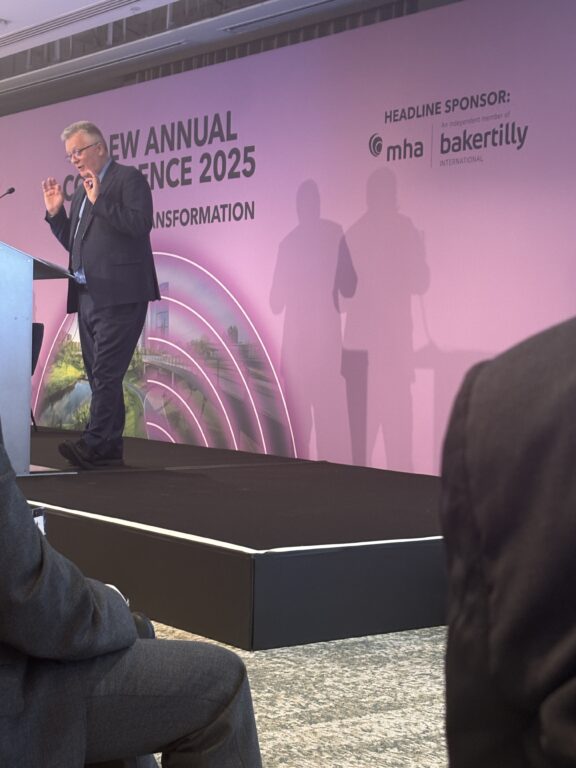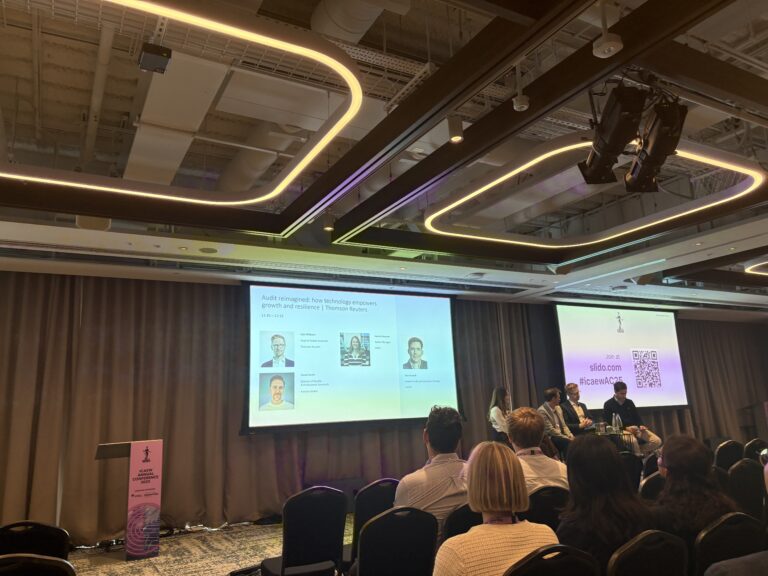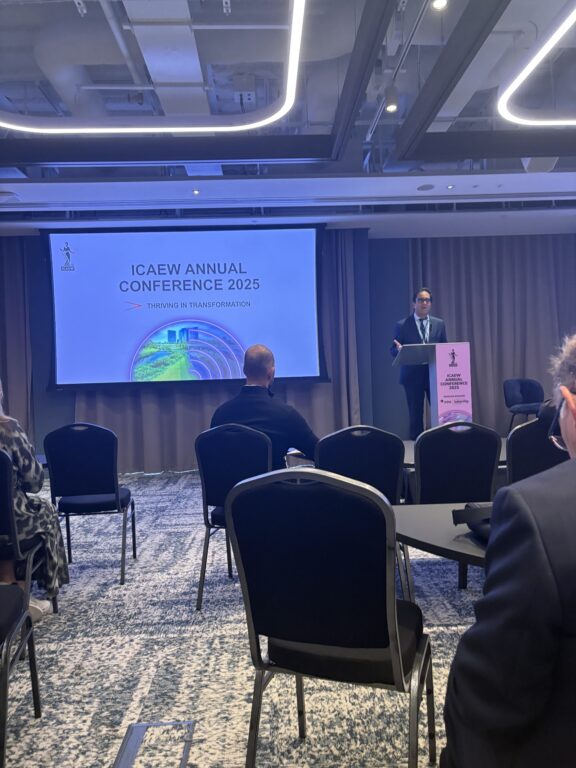Deliberate evolution at the ICAEW Annual Conference 2025
At the ICAEW Annual Conference, discipline replaced disruption as the theme of the day. Speakers urged firms to modernise with care, focusing on structure and proof rather than speed.
At the ICAEW Annual Conference, discipline replaced disruption as the theme of the day. Speakers urged firms to modernise with care, focusing on structure and proof rather than speed.
At the ICAEW Annual Conference one theme cut through every discussion. Change only matters when it is managed with discipline. Speakers challenged firms to modernise with care and build operating models that cope with reform without losing momentum. The day moved between the economy, audit, tax and artificial intelligence, yet the logic stayed consistent. Progress comes from steady improvements that compound.
Huw Pill, Chief Economist and Executive Director for Monetary Analysis at the Bank of England, opened the day with a tone that anchored everything that followed. He explained that the Bank’s approach to monetary policy would remain evolutionary, not revolutionary. “We are dealing with important issues that deserve careful attention,” he said, reinforcing the Bank’s intent to refine its data, models and communication while keeping its core mandate intact. As he put it,
“The pursuit of price stability with monetary policy is a never-ending journey.”

His remarks resonated because they echoed the challenge facing accountants: how to improve without undermining the systems that create trust. Pill’s emphasis on steady evolution rather than grand reinvention could easily have been advice for the profession itself. The lesson was to keep learning, keep adjusting, and continue communicating with purpose – an approach that would underpin every discussion that followed.
The panel on audit reform, featuring Kyle Gibbons, Managing Director at Thomson Reuters, David Smith, Global Quality and Risk Director at Kreston Global, and Harriet Bourne, Partner at Azets, developed that theme with precision. The conversation focused on how technology should enhance audit quality by reinforcing professional standards, not by chasing automation for its own sake. As one panellist observed, firms face “existential challenges” if they fail to embed technology properly “in your processes, in your methodology.”
Firms need to understand the flow of their work before adding digital tools. Quality improves when evidence trails are consistent, risk assessments are carried through every stage of the file, and multi-entity audits are coordinated seamlessly. And the right software supports those outcomes. When methodology leads and technology follows, teams work with greater consistency and partners can explain choices to clients and regulators with confidence. The discussion reflected a shift from impulse to structure.

Chris Downing, Director for Accountants at Sage, brought that same pragmatism to tax and compliance. He warned that the transition to Making Tax Digital will test every practice in the UK. “Eight hundred thousand individuals will have to sign up to the Agent Services Account by next April,” he said. “Forty-odd working days” to handle that volume, he added, before letting the arithmetic speak for itself. Downing encouraged firms to prepare by running small-scale pilots of the full digital process now, using them to refine communication with clients and identify bottlenecks. In his view, success will come not from longer hours but from better design.
He also discussed how agentic AI can relieve the mounting administrative burden. Within tools such as Sage’s, AI already handles routine tasks like data extraction, document chasing and initial error checking. By automating these low-value steps, practices can free advisers to focus on interpretation and advice.

The day’s most global perspective came from Sanjiv Tumkur, Head of Equity Research at Rathbones, who explored how generative AI is reshaping investment patterns and corporate decision-making. He described a surge in infrastructure spending, particularly on chips, servers and energy capacity, and noted that “aggregate capex spending is rising dramatically.” For now, he observed, much of the value creation sits with hardware and infrastructure providers, while returns across the broader economy remain uneven. Some projects are delivering measurable gains, but many are still experimental and costly to scale.
Tumkur also highlighted the growing strain on energy systems. “A massive power deficit is emerging as data centre capital expenditure increases,” he warned, pointing to a short-term “renaissance in demand for gas turbines” while longer-term generation capacity lags behind. For accountants, that insight has practical consequences. Energy use, cooling requirements and supply constraints must be factored into project models and sustainability reporting, not treated as footnotes. He reminded the audience that AI’s impact will reach far beyond the balance sheet, from resource planning to workforce shifts and governance disclosures. Accountants who understand these factors will be better placed to guide boards through the financial realities behind the hype.
For many attendees, the most immediate task is to translate those insights into small, verifiable steps. In practice, that means reviewing one process end to end – whether a tax workflow or an audit engagement – and identifying where time is lost or reviews repeatedly flag the same issues. Redesigning that single process, testing it, and comparing outcomes a week later creates a data point that leaders can trust. Change then becomes tangible and repeatable.
Firms preparing for Making Tax Digital should select a pilot group of clients that reflects different levels of complexity and guide them through the full journey well ahead of the deadline. Consistent templates and communication will help reduce duplication during peak periods. In audit, leadership teams should focus digital investment on areas where risk is highest, such as evidence collection and group coordination, and ensure reviewers apply the same standards across files. AI adoption should follow the same disciplined approach: start with one or two high-frequency tasks, set baselines for quality and speed, and only expand when both improve.